Like any form of art, painting with teens helps them make sense of their life, relationships and encourages growth.

As youth walk through the world they face several difficult things to navigate, including heartbreak, sexual development, friendship, drug and alcohol use, family dynamics and decisions about the future.
Being a mentor for youth, God has placed you in a unique position to help them make sense of it all. And art, with its many applications, is a great way to do so.
Do you incorporate painting with teens in your ministry? We’d love to know how in the comments below!

Just a Starting Point
There are countless ways to help teens process what’s going on in their lives. Art with teens is a helpful avenue with endless possibilities. We’ve put together a list of just five ideas in this blog series: art journaling, sculpture, painting, poetry, and photography.
No matter our age, we connect to our Creator as we live into our own creativity. God creates us, and we’re a part of that collaborative process. Painting with teens is a cool way to experience this metaphor.
We hope these painting ideas are a starting point into deeper connection with God and self and that they help your youth make sense of their world.

Laying the Foundation for the Process
All of us, especially teens, develop through a process of trial and error. Art can be the same way as we create through play. We try a thing and see what happens, becoming familiar with the medium and adjusting along the way.
When making art as a form of spiritual formation, there is no specific goal except to listen internally. Each of your youth has a unique story and perspective. As you teach them to listen to the voice within, you facilitate their process of connection with God. So, assure them that there is no wrong or right way to paint.
When doing art with teens, help them trust their intuition, because it is the wisdom guiding them in their process of exploration and growth. As youth learn to trust this, they uncover who God has created and is creating them to be.
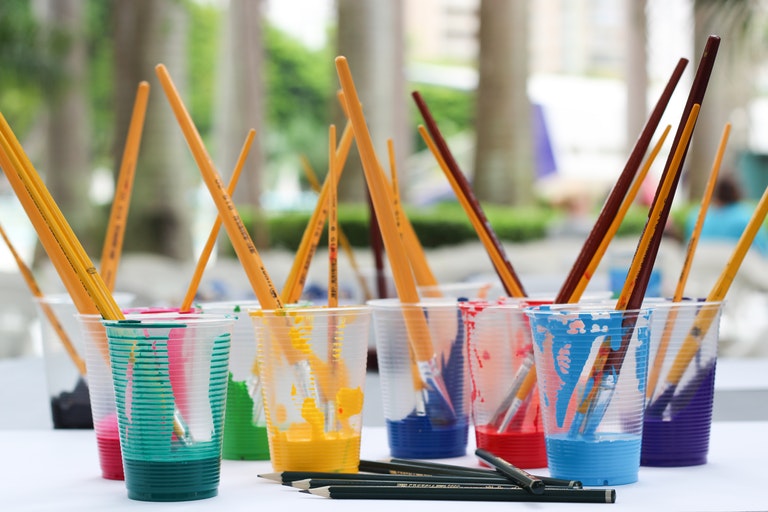
A Note on Lowering Anxiety
Many youth feel self-conscious and insecure when doing art. So, help ease their anxiety with a few simple tactics.
First, when painting with teens try switching out conventional materials for more unconventional ones like using cardboard instead of watercolor paper. Also, try allowing them to only use their non-dominant hand or have them close their eyes while painting. Additionally, try using paints they used as children, like watercolor trays or bottles of tempera paint.
These tactics help the kids feel that talent isn’t as much a factor in their process and outcome. Now, let’s dive into a few ideas!
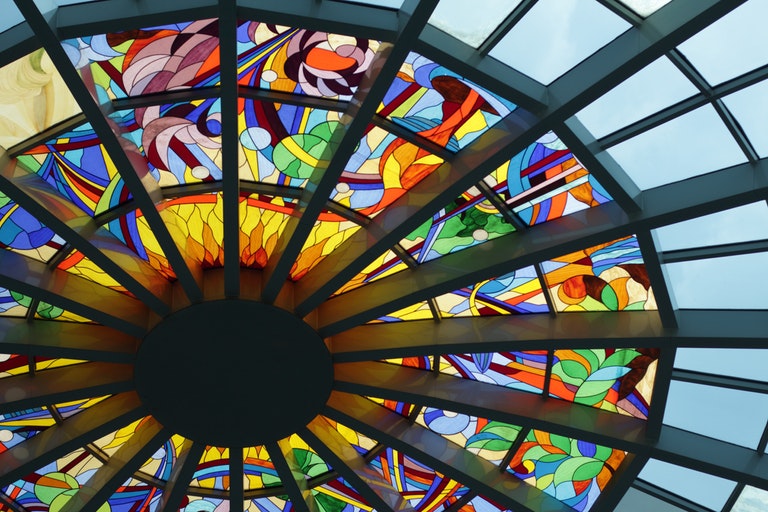
Crumpled Paper Painting
Pre-paint sheets of paper with dark blue or black paint and crinkle them up into a ball. Place the balls of paper altogether in a container.
Invite your youth to choose one ball of paper. Provide them with paints and paint brushes to create their own painting using the lines on the crumpled paper. This project can be painted in 3D or 2D formats.
Additionally, give them a quote or two to consider as they paint and lead a discussion about their process and reflections after they’ve completed their painting. Use the following quote or others that speak to your youth’s context.
“People are like stained-glass windows. They sparkle and shine when the sun is out, but when the darkness sets in, their true beauty is revealed only if there is a light from within.” -Elisabeth Kubler-Ross
“The Internet is the stained glass picture of the 21st century.” -Diana Butler Bass
“The easiest thing to do is throw a rock. It’s a lot harder to create a stained glass window. I used to get upset at the people who threw rocks but now I’d rather spend my time building the stained glass windows.” -Jon Foreman
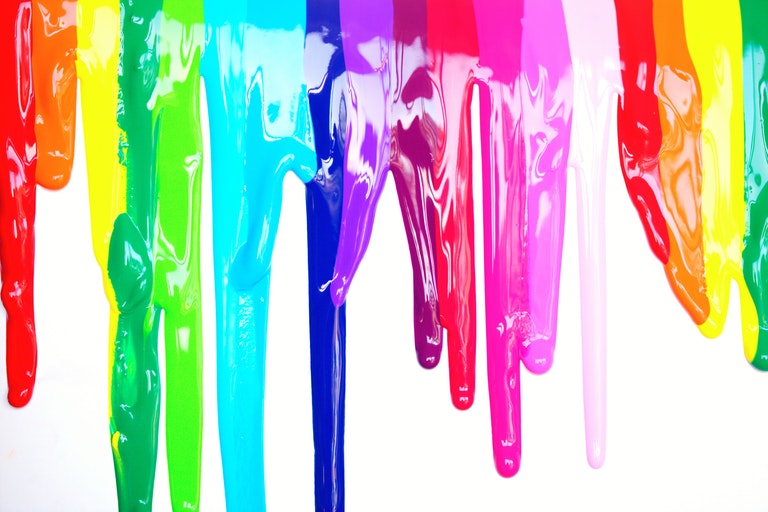
Drip Painting
This can be a large scale painting done on large sheets of paper on the floor using pour-pots of latex paint. This option can be utilized for a group art project that is completed as a community together. Alternatively, this painting can be created on a small scale using watercolor paper and paint. Organic watercolor shapes can also be painted on the background prior to the drip painting.
For large scale, mount a large piece of canvas on the wall or hang it from the ceiling. Then, provide pour pots of water-based acrylic paint with large paint brushes. Encourage students to work together filling the whole canvas. They can use both painting and pouring techniques as long as it’s non-representational and abstract shapes. Be sure to mask off the ground on which you’re working for easier clean-up.
For small scale, give each student a piece of watercolor paper, a brush or two, a cup of water for rinsing, a few paper towels and a case of watercolor paints like they would have used as children. Next, allow time for the students to fill their paper using the drip and paint method. Be sure to line the table with plastic tablecloths.
Then, lead a discussion with them about the way they used both methods and how they made their decisions. Ask them if they found anything that connected to their understanding of God or their faith journey as they worked.
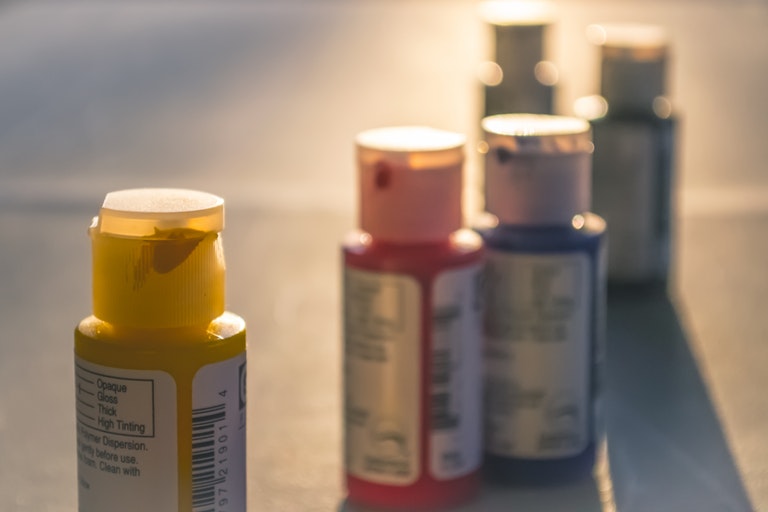
Poured Line Painting
This is an art technique that takes little preparation and planning. It’s a wonderful technique that provides an opportunity to play with “fail free” abstract painting. Ask the students to think as they paint about their feelings around failure, how they define failure, where their standards for failure come from.
First, provide the students with watercolor paper and tubes or small cups of water-based paint. Ask teens to pour their paint onto their sheet of watercolor paper in free-form poured lines. Cross poured lines over one another to form interesting shapes. Teens can also “rock” the paper to create spontaneous designs. Allow lines to completely dry. Next, provide watercolor paint to fill in the shapes with color.
Then, once they’ve completed their pieces, lead a discussion about their reflections as they painting and wonder with them about God’s take on failure and how the world’s ideas may differ.
We hope these ideas have inspired you to think of painting with teens as a spiritual practice. Have you seen the power of painting with your youth? Don’t forget to tell us about it in the comments below!

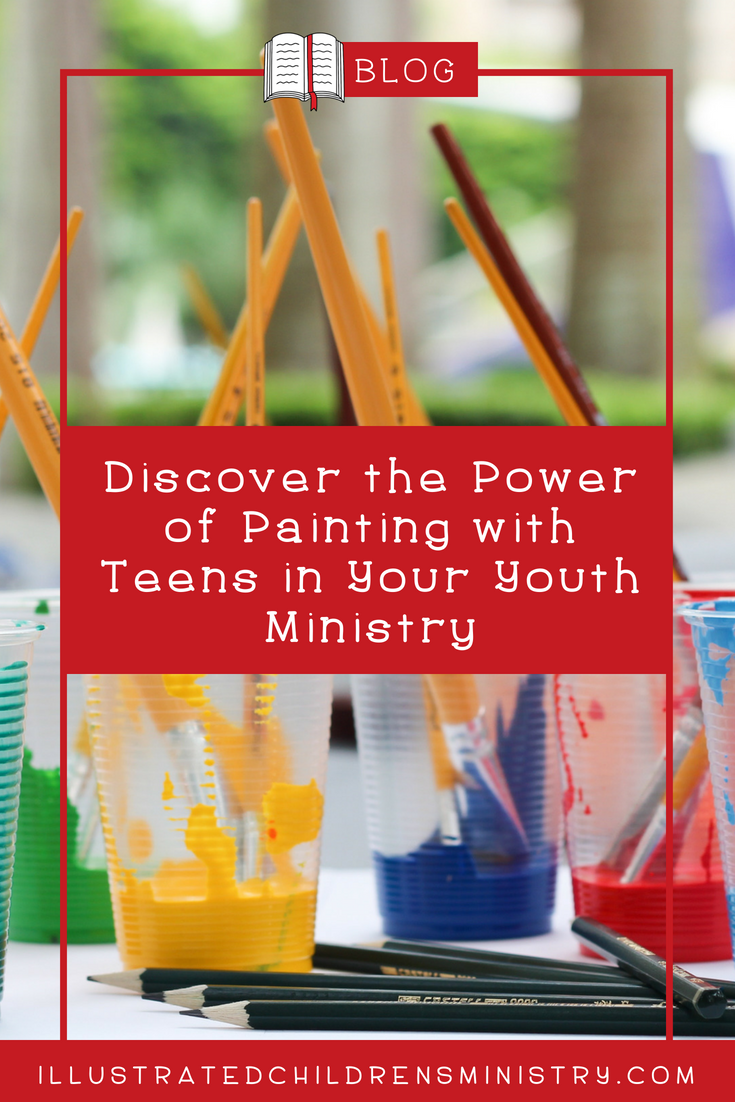
Leave a Reply